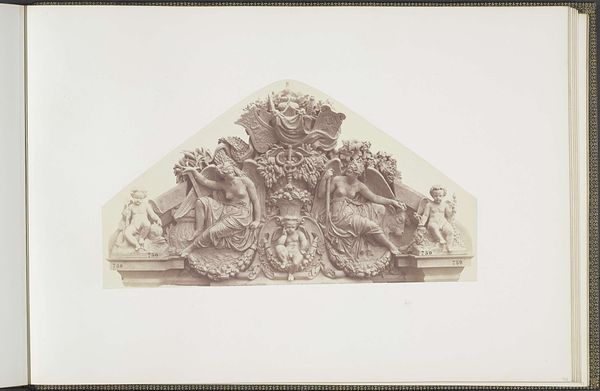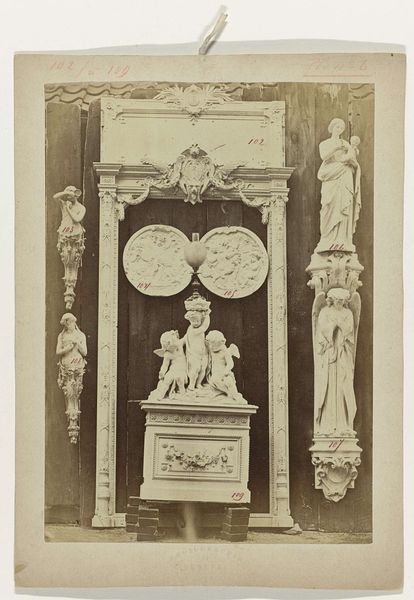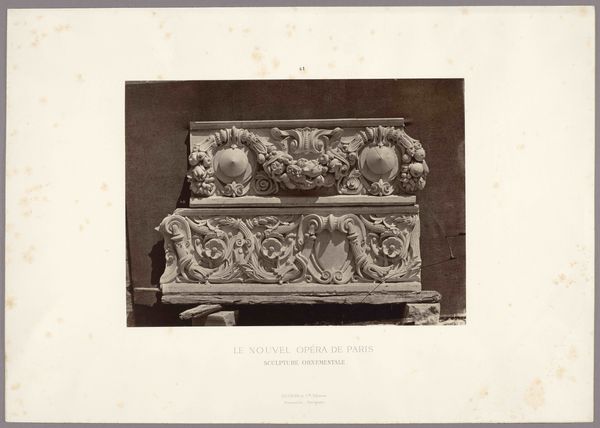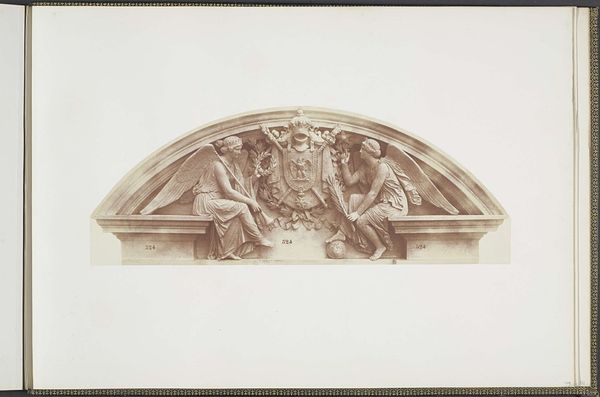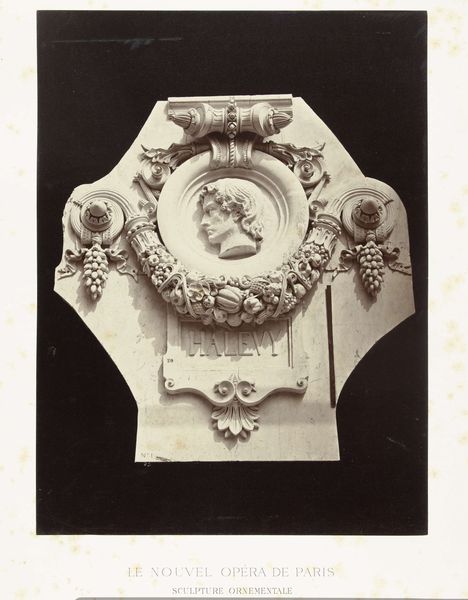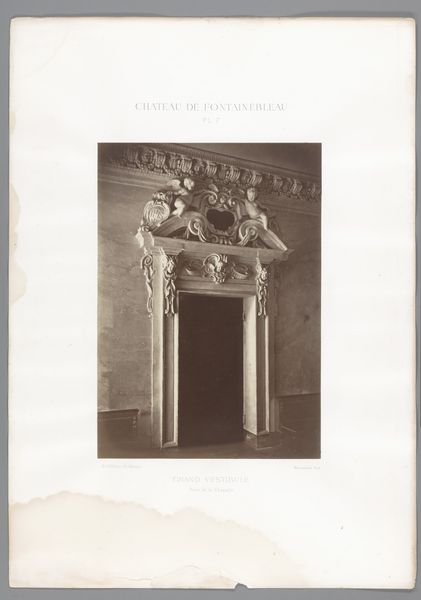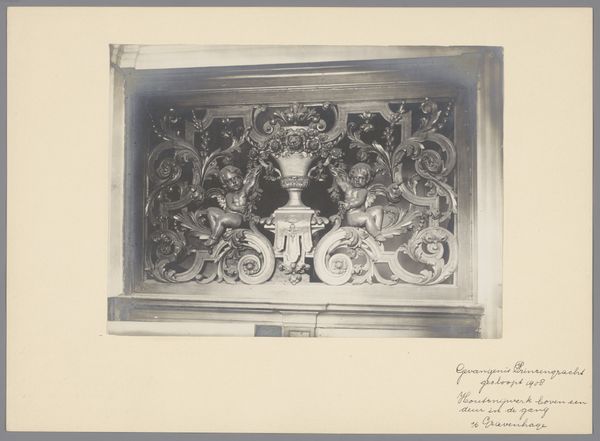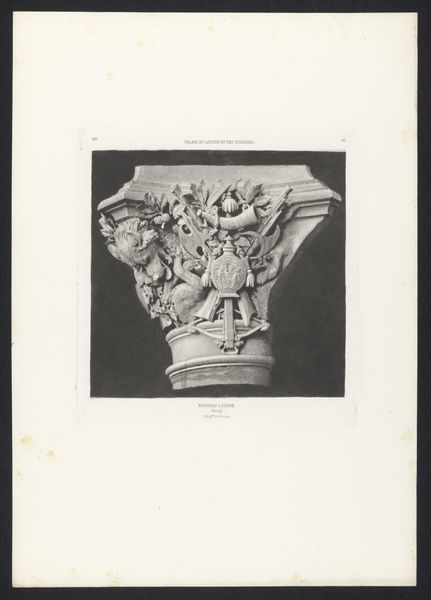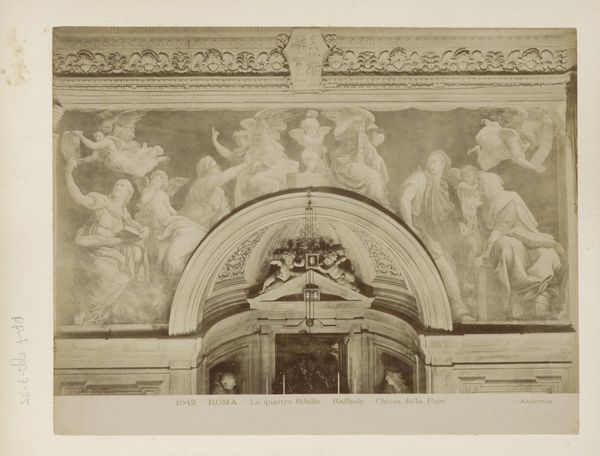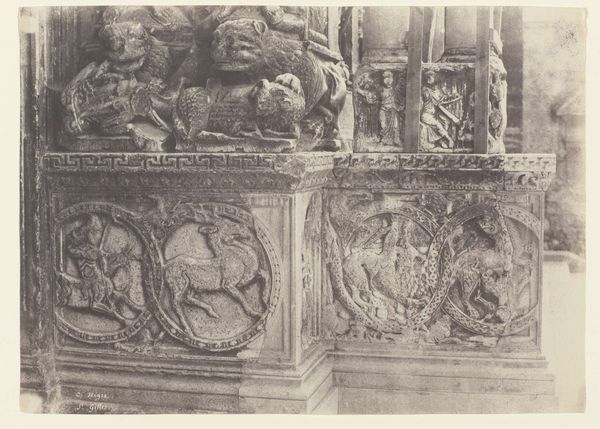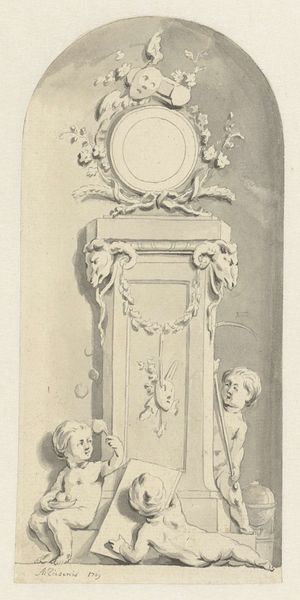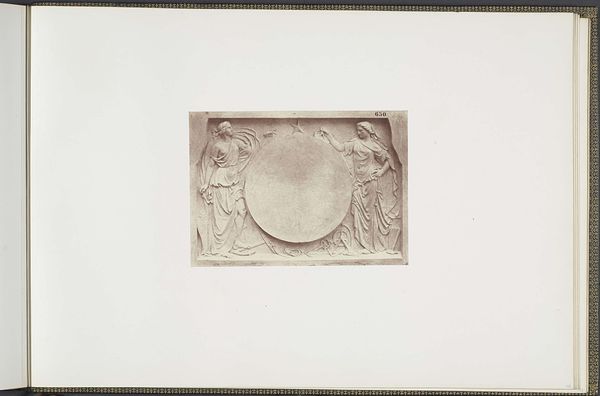
Reliëf met engeltjes naast een medaillon, samen houden zij een fruitslinger vast. c. 1878 - 1881
0:00
0:00
Dimensions: height 280 mm, width 375 mm, height 620 mm, width 438 mm
Copyright: Rijks Museum: Open Domain
Curator: Immediately, I notice the photograph's stark contrast and meticulous detailing of the figures. It projects a rather imposing stillness. Editor: Indeed. This is a photographic study, likely from around 1878-1881, by Louis-Emile Durandelle. It documents a marble relief intended for the New Paris Opera. Note how he masterfully captured the play of light on the three-dimensional surface. Curator: The composition itself is overtly symmetrical; observe how the cherubic figures mirror each other, flanking what looks like a blank central medallion framed by floral garlands. This symmetry lends a certain visual stability and emphasizes the formality, almost ritualistic aesthetic of neoclassicism. Editor: The cherubs themselves draw from a deep well of historical precedent. Neoclassical art revived and reimagined the forms and narratives of the Antique world; thus, placing art explicitly within the trajectory of Western ideals and, of course, French cultural ambition at the time. The opera house itself was, politically, a grand statement of France's cultural leadership after the Franco-Prussian war. Curator: Observe the texture achieved within the sculptural medium and how effectively Durandelle, through photographic means, translated it into grayscale. Consider the contrast in rendering: The smoothness of cherubs' skin against the rich textures of the surrounding ornamentation offers an extremely palpable, physical presence. Editor: Precisely. Durandelle wasn't merely recording; he was actively interpreting. By isolating this relief, and publishing it within a portfolio titled “Le Nouvel Opéra de Paris. Sculpture Ornamentale”, he encourages us to contemplate this decorative element within a grand, overtly political and symbolically potent building. Curator: The choice of the blank medallion in the middle almost forces you to reflect upon it, as if to see how your presence reflects on the opera’s rich ornamentation and how meaning is generated through spatial relationships. Editor: A perfect summary of the intent of high art of that period. The echoes of imperial Rome resonates from an architecture that serves, ostensibly, the common culture. Thank you. Curator: Thank you as well. Always something new to uncover.
Comments
No comments
Be the first to comment and join the conversation on the ultimate creative platform.
